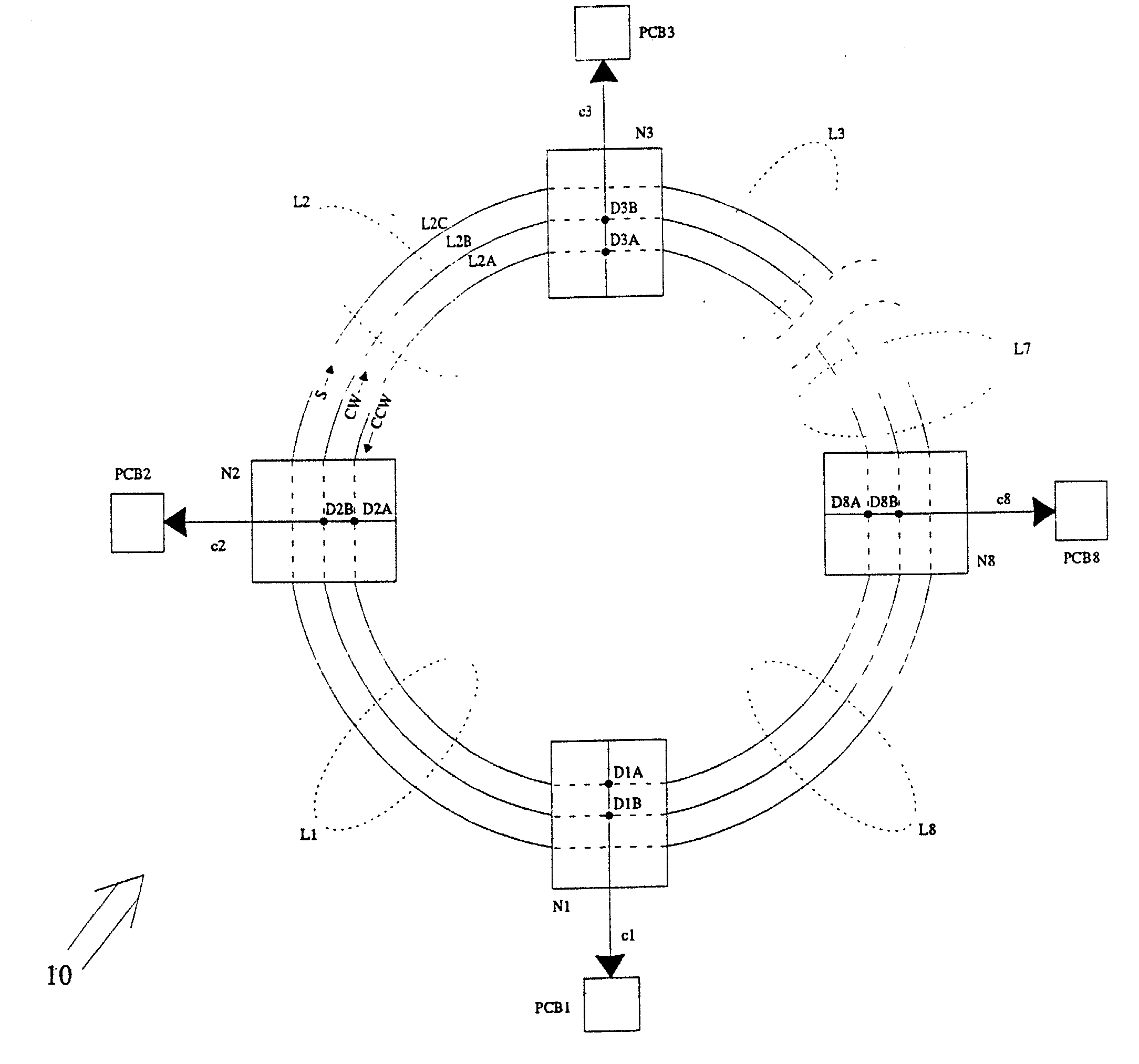Method and apparatus for distributed synchronous clocking
a distributed synchronous clocking and clocking signal technology, applied in the field of distributed synchronous clocking methods and apparatuses, can solve the problems of power requirements and transmission line effects of high-speed clock signals that are not suited to the power requirements of high-speed clock signals, and the jitter of clocking signals along these paths becomes an ever increasing problem
- Summary
- Abstract
- Description
- Claims
- Application Information
AI Technical Summary
Benefits of technology
Problems solved by technology
Method used
Image
Examples
Embodiment Construction
[0038] In the drawings, corresponding items in the different Figures have the same reference numbers.
[0039] FIGS. 1 and 2 illustrate, schematically, a high-speed synchronous digital system 10, such as a computing or communications switching system, having a plurality of nodes N1 . . . N8 interconnected by propagation channels L1 . . . L8 for clock synchronization pulses. Node N1 comprises a master node and nodes N2 . . . N8 comprise slave nodes. For ease of illustration, only four of the nodes, N1, N2, N3 and N8, are shown in FIG. 1. It should be appreciated that the invention is not limited to systems having only eight nodes, however; a practical system could have many more nodes. The nodes N1, N2, N3, . . . N8 are associated with system parts whose operations are synchronized by clock signals c1, c2, c3, . . . c8, supplied by nodes N1, N2, N3, . . . N8, respectively. These system parts are represented as printed circuit boards PCB1, PCB2, PCB3, . . . PCB8, respectively, but it sho...
PUM
 Login to View More
Login to View More Abstract
Description
Claims
Application Information
 Login to View More
Login to View More - R&D
- Intellectual Property
- Life Sciences
- Materials
- Tech Scout
- Unparalleled Data Quality
- Higher Quality Content
- 60% Fewer Hallucinations
Browse by: Latest US Patents, China's latest patents, Technical Efficacy Thesaurus, Application Domain, Technology Topic, Popular Technical Reports.
© 2025 PatSnap. All rights reserved.Legal|Privacy policy|Modern Slavery Act Transparency Statement|Sitemap|About US| Contact US: help@patsnap.com



